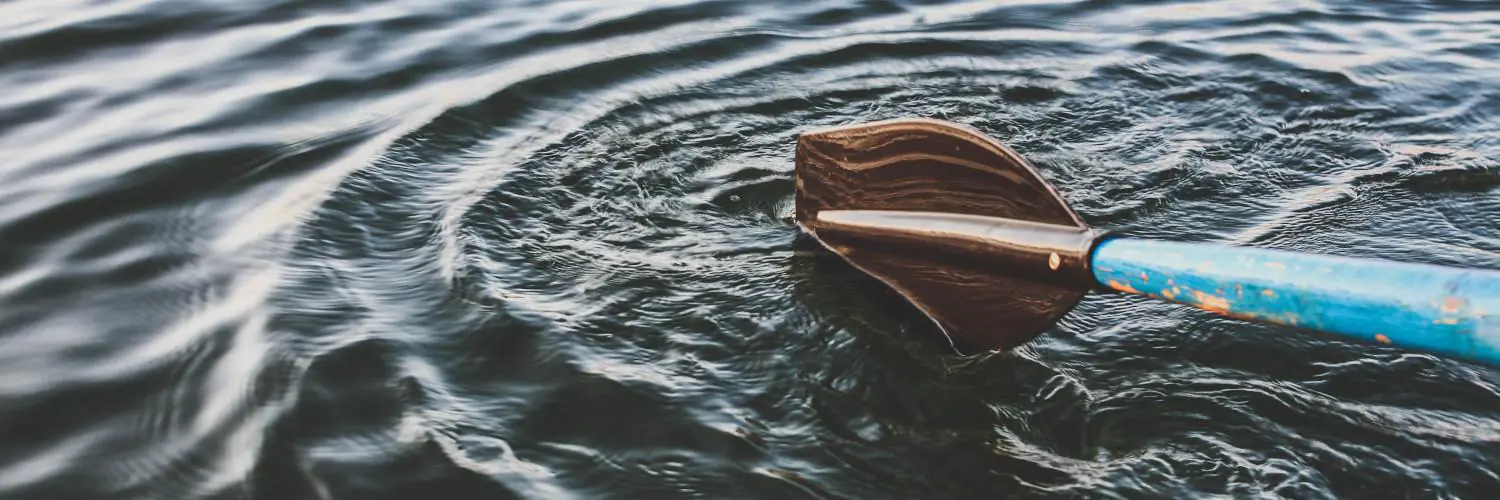Kayaking is more than just a fun activity on the water. It’s an effective aerobic exercise that helps improve cardiovascular health and overall fitness. Paddling through the water raises heart rate, builds endurance, and works several major muscle groups at once.
Unlike many high-impact sports, kayaking is gentle on the joints while still offering a full-body workout. This makes it a good option for many people who want to stay active without putting too much strain on their bodies. Readers interested in finding a new way to get fit outdoors may find that kayaking is an enjoyable and practical choice.
Table of Contents
How Kayaking Functions as an Aerobic Exercise
Kayaking uses steady, rhythmic movements to work large muscle groups in the arms, back, core, and legs. This physical activity increases heart and breathing rates, making it a form of aerobic exercise with real benefits for fitness levels and heart health.
Understanding Aerobic Fitness
Aerobic fitness measures how well the body uses oxygen during activity. Kayaking meets the definition of an aerobic workout because it involves continuous motion and keeps the heart working for an extended period.
During a typical outing, paddlers move their bodies naturally in a back-and-forth pattern. Each stroke helps maintain an elevated heart rate, similar to other aerobic exercises like cycling or brisk walking.
The body needs more oxygen while kayaking, so breathing deepens and becomes more frequent. This improvement in breathing and oxygen use helps the lungs and entire body function better over time. As a result, regular kayaking can boost overall fitness and stamina in a low-impact way.
Aerobic Capacity and Endurance
Aerobic capacity is the body’s ability to take in and use oxygen efficiently. When kayaking, the movement and pacing build endurance and muscle strength. The longer someone paddles, the more their body adapts to using oxygen for energy.
Kayaking often involves steady paddling for up to several hours. This sustained effort can help participants burn calories and maintain their energy levels throughout the day. The more often a person kayaks, the better their endurance becomes.
Improvements in endurance can help people perform daily tasks without feeling as tired. Building this capacity means the heart, lungs, and muscles are able to handle longer bouts of physical activity, both in and out of the water.
Cardiovascular Health Benefits
Kayaking raises the heart rate and encourages healthy blood flow. This helps make the heart stronger and supports good cardiovascular health. Paddling through water requires the heart to pump harder, which can lower blood pressure and reduce cholesterol levels over time.
Kayaking is also a low-impact activity, making it an option for many people, including those who might have trouble with other types of workouts. This outdoor activity can reduce joint stress while still promoting heart and lung health.
A regular kayaking workout can also support mental health. Being outside and focusing on steady, repetitive paddling helps lower stress and improve mood. These physical and mental health effects work together, making kayaking a good exercise for long-term wellness.
Key Muscle Groups Engaged During Kayaking
Kayaking works several muscle groups at the same time. It improves core stability, upper body strength, and lower body balance, making it a full-body workout.
Core Muscles and Core Strengthening
The core muscles—including the abdominals, obliques, and lower back—are deeply involved in kayaking. Paddling needs steady torso rotation, which mainly comes from the core instead of just the arms.
Each stroke starts with twisting the torso, not simply pulling with the arms. This twisting action helps power the kayak forward and keeps the boat moving straight. The core keeps the body stable and upright, helping maintain balance on the water.
Kayaking can improve both core strength and core stability over time. Stronger core muscles also help prevent injuries, especially in the lower back. People often notice more control in their movements after regular paddling.
Back, Shoulders, and Upper Body Strength
During a paddle, the back and shoulder muscles do most of the work. The latissimus dorsi (middle and lower back), trapezius, and rhomboids are especially active with each stroke.
The shoulders—mainly the deltoids—help lift and move the paddle. These muscles work with the biceps and triceps in the arms, which help with the pushing and pulling in the paddling motion.
A kayaker who paddles regularly builds upper body strength. This strength helps with paddling longer distances and also improves posture outside the kayak. The upper body muscles used in kayaking are listed below:
- Back: Latissimus dorsi, trapezius, rhomboids
- Shoulders: Deltoids
- Arms: Biceps, triceps
Lower Body Engagement and Stability
While the upper body does most of the moving, the lower body helps with control and balance. The glutes, quadriceps, and hamstrings stay engaged during paddling, even if their movement is limited.
The legs press against the kayak’s foot pegs and help stabilize the hips. This stability lets the torso twist fully for effective paddling while keeping the kayak from tipping.
Strong glute and leg muscles support better posture and balance. Lower body engagement is not about generating power, but about keeping the kayak steady and making each stroke efficient. Balance and stability are just as important as strength in this part of the body.
Health and Fitness Benefits of Kayaking
Kayaking offers specific health benefits like improving cardiovascular fitness, increasing muscle strength, and supporting mental well-being. It is a low-impact aerobic activity that helps burn calories, reduce stress, and promote overall recovery.
Full-Body Workout Effects
Kayaking is a full-body workout that targets muscles throughout the upper and lower body. Paddling works the shoulders, arms, chest, and back as the main power movers. Core muscles, such as the abdominals and obliques, help maintain stability and balance on the water.
Legs are also engaged during paddling through bracing and controlling the kayak’s direction. Compared to using resistance bands or doing traditional strength training, kayaking provides steady resistance from the water. This action helps build muscle strength, muscular endurance, and flexibility. Regular kayaking can help tone the body without adding bulky muscle mass.
Calorie Burn and Weight Loss
Kayaking can help burn calories and promote weight loss when done regularly. According to Harvard Health Publications, a person weighing 125 pounds can burn about 150 calories in 30 minutes of kayaking. Heavier paddlers may burn even more.
The caloric expenditure depends on paddling speed, water conditions, and individual effort. Kayaking at a moderate pace helps create a calorie deficit, which is necessary for weight loss. Combined with a balanced diet, regular sessions can support healthy body composition. People looking for a fun way to increase their activity level may find kayaking motivating and sustainable.
| Weight (lbs) | Calories Burned (30 mins) |
|---|---|
| 125 | 150 |
| 155 | 186 |
| 185 | 222 |
Low-Impact Activity and Injury Prevention
Kayaking is a low-impact activity, making it suitable for people with joint or mobility issues. The smooth, repetitive movement puts less stress on knees, hips, and ankles compared to running or high-impact sports.
Because it is performed while seated, kayaking reduces pressure on the lower body. This makes injury prevention easier, especially for those returning to exercise or recovering from an injury. Many people also combine kayaking with recovery methods like foam rolling or dynamic stretches to support muscle health and decrease soreness after a session. Good technique and proper warm-up can help further lower the risk of injuries.
Mental Well-Being and Stress Relief
Kayaking is known to help reduce stress and support mental health. Spending time outdoors on the water has been linked to lower anxiety and improved mood. Exposure to sunlight allows the body to produce vitamin D, which is important for overall well-being.
The steady rhythm of kayaking can be calming. Many people find it helps clear their mind and boosts focus. Paddling in natural settings offers a break from everyday routines, making it easier to relax. Regular kayaking may also support recovery from stress-related fatigue and improve overall quality of life.
Paddling Technique and Exercise Effectiveness
Kayaking uses specific movements for both efficiency and safety. Good paddling technique can help build stamina and muscle coordination while making workouts more effective.
Proper Paddling Motion
A smooth paddling motion is built on rhythm, timing, and full-body engagement. The paddle should enter the water near the feet, with the blade fully submerged. Next, the kayaker pulls the blade back following the kayak’s shape, using their core and upper back muscles as much as their arms.
Good paddling is not just about arm strength. Rotation from the torso should generate much of the power, helping to protect the shoulder joints and reduce fatigue. This motion improves endurance and helps kayakers get more aerobic benefit from longer sessions.
Key points for correct propulsion include:
- Rotate shoulders and hips with each stroke
- Keep elbows slightly bent
- Move with a steady tempo, matching breath with movement for better endurance
Forward Stroke and Turning
The forward stroke is the basic move for paddling efficiently. This technique starts with a reach forward and a blade catch near the toes. The paddle is then driven back, parallel to the kayak, while the other hand pushes forward.
Turning requires a different motion. Wide sweeping strokes or reverse strokes are used to change direction. For a sharp turn, the kayaker extends the paddle out further from the kayak and draws it in a wide arc.
Maintaining cadence during both forward paddling and turning is important for consistent speed and smooth movement on the water. Practicing these strokes helps with coordination and balance, making each workout more effective.
Posture and Control
Posture in kayaking means sitting upright with relaxed shoulders, feet against the footrests, and knees slightly bent. This helps stabilize the kayak and allows the paddler to use their core for both power and balance.
Good control comes from a strong connection between the kayaker and the boat. By staying centered and adjusting body movements, they can respond quickly to changes in current or direction. This reduces wasted effort and lets the paddler focus more on endurance and stamina.
Proper posture also lowers the risk of soreness or injury, letting kayakers spend more time exercising and improving skills on the water.
Integrating Kayaking Into Your Fitness Routine
Kayaking is more effective for fitness when paired with other exercises. Combining paddling with strength, flexibility, and recovery routines creates a balanced workout routine that improves both endurance and muscle strength.
Combining Kayaking With Strength Exercises
Strength exercises improve paddling power and help prevent injuries. Many kayakers add bodyweight movements like push-ups, pull-ups, and squats to their weekly routines. These build upper and lower body strength for better control on the water.
Resistance bands are useful for beginners because they add challenge without causing too much strain. Movements like rows and lat pulldowns mimic the kayak stroke. Core strengthening is also important; exercises such as Russian twists and planks help maintain good posture and balance while paddling.
A typical weekly schedule might alternate between water days and strength-training sessions. This approach keeps workouts balanced and helps with recovery.
Sample Workout Routines for Beginners
Beginners should focus on simple exercises that build core strength, flexibility, and aerobic fitness. A weekly routine might look like this:
| Day | Activity |
|---|---|
| Monday | Kayaking (30-45 mins, cardio focus) |
| Tuesday | Strength: Push-ups, Squats, Lunges, Planks (2 sets of 10-15 reps) |
| Wednesday | Cardio: Brisk walk or jog (20-30 mins) |
| Thursday | Kayaking (technique focus) |
| Friday | Resistance band rows, Russian twists, Pull-ups (assisted if needed) |
| Saturday | Rest/Stretching/Recovery |
| Sunday | Optional kayaking, light activity |
Warm-ups should include dynamic stretches to prepare muscles for activity. Consistent practice of these routines helps beginners meet their fitness goals and develop healthy habits.
Improving Flexibility and Recovery
Flexibility and recovery are key for preventing sore muscles and increasing range of motion during paddling. Before any workout, dynamic stretches such as arm circles and leg swings warm up the muscles.
After kayaking or strength training, static stretches help lengthen tight muscles, especially in the shoulders, back, and legs. Foam rolling or gentle stretching can reduce stiffness and help with recovery.
Adding mobility exercises like the open book exercise keeps the upper back flexible, which is important for a strong paddle stroke. Recovery days should focus on light movement and rest, making sure beginners are ready for their next exercise routine.
Maximizing Results and Ensuring Safe Practice
Proper technique and careful tracking are key to getting the most from kayaking while reducing risks. Focusing on injury prevention, recovery, and mindful monitoring helps maintain stability and control, improve cardiovascular health, and support muscular endurance.
Injury Prevention Tips
Warming up before heading out is important. Simple stretches for the shoulders, back, and legs reduce the risk of muscle strains. Keeping good posture during paddling—back straight, shoulders relaxed, core engaged—prevents common injuries to the lower back and shoulders.
Attention to control is also necessary. Using the right form for each stroke helps protect joints and muscles. Wearing a well-fitted life jacket adds stability and keeps the paddler safe.
It’s helpful to do strength exercises such as rows, planks, or shoulder presses at home. These activities improve muscular endurance and prepare the body for longer sessions. Take breaks on the water to avoid overexertion, especially in hot or challenging conditions. Stay hydrated and listen to the body’s signals to prevent injury and burnout.
Monitoring Progress and Recovery
Tracking kayaking sessions in a simple table or journal is helpful. Write down time spent paddling, distance traveled, and feelings of effort or fatigue. This helps spot improvement in cardiovascular health and endurance.
| Date | Time (min) | Distance (km) | Level of Fatigue (1-10) |
|---|---|---|---|
| June 1 | 30 | 3 | 5 |
| June 8 | 40 | 4.5 | 6 |
Allowing time for recovery is as important as training itself. Schedule at least one rest day between intense sessions, and include gentle stretching after paddling to support muscle repair. Noticing aches, lingering fatigue, or a drop in performance can be a sign to slow down. Building regular routines that balance effort and rest keeps progress steady and reduces the risk of injury.








